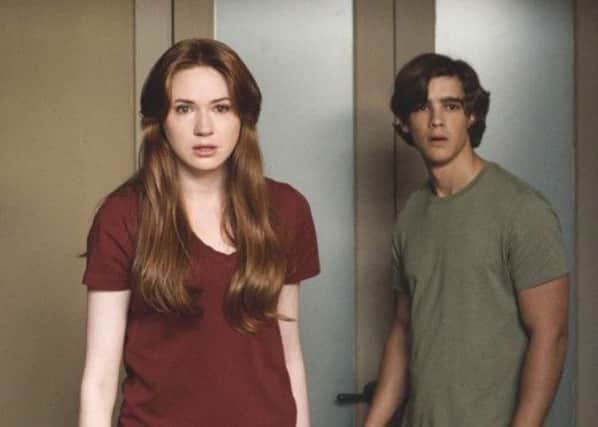Thriller’s reflections on the dark power of the mirror


Cinema by its very nature is cyclical. And producers are keenly aware that what worked once will work again if given a suitably effective modern twist.
That was the approach taken by Mike Flanagan with Oculus, in which former Doctor Who companion Karen Gillan and Brenton Thwaites are wounded siblings Kaylie and Tim Russell who come to realise that the violent deaths, ten years before, of their parents were caused by the Lasser glass, an old mirror hanging in their home. As their suspicions and their knowledge grow, so history begins to repeat itself.
Advertisement
Hide AdAdvertisement
Hide AdAs villains go the mirror is something of a blank canvas. No footsteps in the dark. No heavy breathing. No hairy hand on the banister rail. No axe, butcher knife, meat cleaver or chainsaw. Instead the mirror itself, plus some moody music, shadowy lighting and reactions from actors, becomes the centre point.
Director and co-writer of Oculus, Mike Flanagan, had originally made his haunted mirror story as a 30-minute short in 2005. Made in four days for $1,500 it was a much smaller, more intimate piece involving one actor in a room. And a mirror.
Oculus was a festival hit prompting calls for a feature-length version. But Flanagan and writing partner Jeff Howard couldn’t think of how to expand and evolve the story. “When we finally hit on the idea of having the main characters be siblings who have a disagreement about these tragic events in their past, that opened the door for a richer story,” says Flanagan. “I was able to bring in a theme that terrifies me now as a parent, and that’s of children being in intense danger at the hands of their parents.”
Producers at Intrepid Pictures, who read and loved the treatment Flanagan and Howard created, called it “lighting in a bottle”.
Advertisement
Hide AdAdvertisement
Hide AdOculus lays out a story of a seemingly inanimate object that has a long and bloody history. The film slides into flashback with Katee Sackhoff and Rory Cochrane as Kaylie and Tim’s parents. It’s here that the unnerving supernatural nature of the Lasser glass is first presented.
The mirror, according to Flanagan, “is absolutely a character into itself. Every mirror is flawed in some way. Every reflection we see is distorted.”
And in the case of Kaylie and Tim, the mirror’s distortion impacts the way that the audience peers into their lives.
But while the mirror and its malign effect was the centrepiece, the story hinges on people. Gillan’s Kaylie has a background in foster care; Thwaites’ Tim has been in a mental institution. He, reveals Flanagan, is the audience’s way in to the story – someone who has “been through intense darkness”.
Advertisement
Hide AdAdvertisement
Hide AdAdds Thwaites: “One of the scariest things about this film is these two kids having to deal with their parents going insane.”
Flanagan said Sackhoff, recently seen opposite Vin Diesel in Riddick, was “one of the strongest actresses I’ve ever seen.” He adds: “Her character transforms from this loving mom to this horrific human beast.”
In addition to Sackhoff and Cochrane, the characters of Kaylie and Tim were recast for the flashbacks. Annalise Basso plays the 13-year-old Kaylie and Garrett Ryan was Tim, aged 11.
Flanagan was acutely mindful of the effect such scenes might have on younger actors but also responded to their energy. “The kids were game for everything,” he says.
• Oculus is on nationwide release.